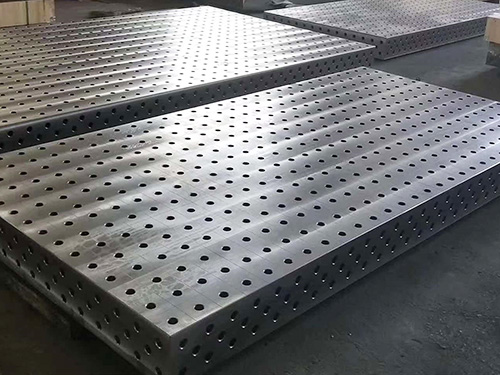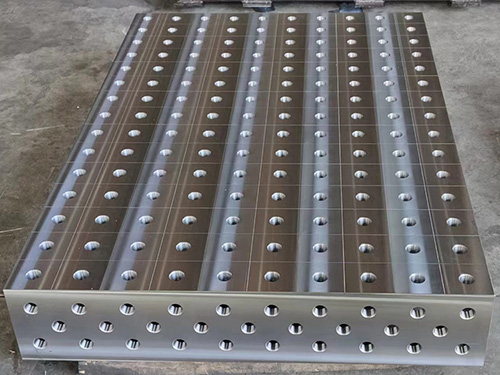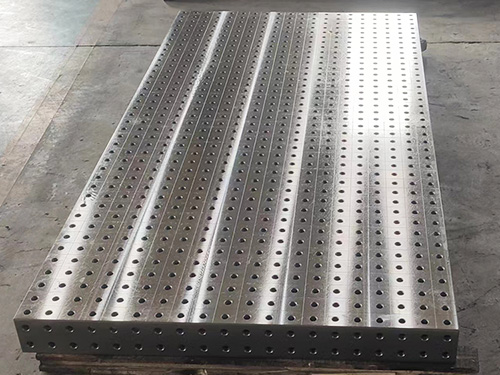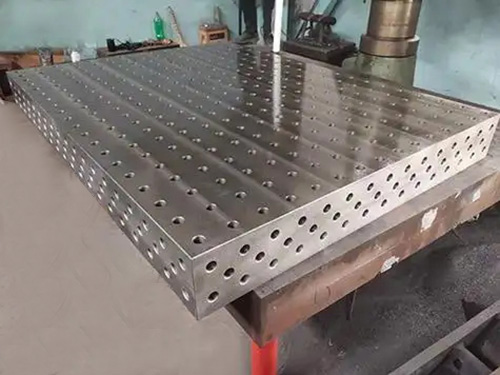How to Choose Welding Table Accessories: Guide to Clamps, Shields, and Grounding Devices
Author:hxrtools Time:2025-07-14 14:15:17 Click:181
In welding operations, the choice of workbench directly affects welding efficiency, quality, and operator comfort. Over the years, welding tables with various accessories have become essential in ensuring high performance. The right choice of clamps, shields, and grounding devices directly impacts the welding quality and overall work experience. This article will provide an in-depth guide on how to select these key accessories to create the ideal welding table setup.


I. Clamps Selection: A Balance of Stability and Flexibility
Clamps are indispensable accessories for welding tables, as they secure workpieces and ensure stability during the welding process. Depending on the welding requirements, the choice of clamps may vary.
·Mechanical Clamps
Suitable for high-precision welding tasks, such as welding small mechanical parts. Mechanical clamps stabilize workpieces using jaws or clamps, providing excellent control and stability. In welding complex-shaped workpieces, mechanical clamps ensure precise positioning and secure holding, improving welding quality.
·Magnetic Clamps
These clamps use powerful magnets to secure workpieces on the welding table, eliminating the need for bolts or other fasteners. Magnetic clamps are ideal for environments where quick workpiece changes are needed, such as automotive manufacturing or shipbuilding. In assembly line operations, magnetic clamps can quickly secure and release workpieces, greatly reducing production time and increasing efficiency.
·Rotary Clamps
Used in conjunction with a welding table equipped with a rotating platform, these clamps are ideal for welding round workpieces or parts requiring full-circle welding. The rotary clamps allow the workpiece to rotate during the welding process, ensuring uniform welding quality and improved efficiency. For pipe and ring parts, these clamps keep the welding head stationary while the workpiece rotates at a consistent speed, ensuring continuous and uniform welding with fewer defects.
II. Shields Selection: Protection and Practicality Combined
Shields on a welding table play a critical role in protecting the operator from sparks, molten metal, and other hazards during the welding process.
·Material Selection
Shields should be made from heat-resistant and corrosion-resistant materials such as steel plates, angle iron, or square tubing. These materials can withstand the high temperatures generated during welding and are resistant to corrosion caused by molten metal. In high-temperature, high-intensity welding environments, high-quality materials ensure that the shield maintains its shape and function without deforming or deteriorating.
·Size Design
The shield's width and length should be designed based on the size of the welding table and the specific welding needs. The shield's width should be no less than 20mm, and the length should be equal to or slightly longer than the width of the welding area, ensuring adequate protection coverage. Proper design ensures the shield effectively covers the welding area and prevents sparks and molten metal from splashing onto the surrounding environment, thus safeguarding the operator.
·Installation Method
The shield should be securely attached to the welding table via welding or bolts. A stable installation prevents the shield from shifting or falling during welding operations. Additionally, leaving a small gap between the shield and the table allows for easy cleaning and maintenance. A stable installation and an appropriate gap facilitate the removal of accumulated slag and dust, prolonging the life of the shield.


III. Grounding Devices Selection: Ensuring Safety and Efficiency
Grounding devices are essential safety accessories for welding tables, as they direct electrical current safely into the ground, preventing electrical shock and ensuring operational safety.
·Choosing Grounding Electrode Types
The selection of a grounding electrode depends on soil resistivity, expected load current, and required safety levels. Common grounding electrodes include copper rods, copper plates, and galvanized steel rods. When choosing, factors like conductivity, corrosion resistance, and cost should be considered. For example, copper rods have excellent conductivity and corrosion resistance, but they are more expensive, whereas galvanized steel rods are less expensive but can rust in humid environments. The choice should depend on the specific operating conditions.
·Layout Principles
The placement of grounding electrodes should minimize ground resistance and maintain sufficient spacing to avoid interference from nearby infrastructure such as underground pipes and cables. Proper layout ensures the efficiency of the grounding system, lowering resistance and improving the grounding efficiency of electrical current, thereby reducing the risk of electrical shock.
·Connection Method
Grounding wires should be laid out as short and straight as possible to minimize resistance and voltage drop. Connection points should use specialized connectors and be properly secured to ensure good electrical contact. All connections should be treated to prevent corrosion, ensuring that the grounding system remains effective over time.
IV. Welding Table Accessory Matching Recommendations
·Choose Clamps Based on Welding Tasks
Different welding tasks require different types of clamps. For example, mechanical clamps are ideal for welding precision mechanical parts, while rotary clamps are best suited for round workpieces. Selecting the correct clamp can enhance welding precision, efficiency, and overall quality.
·Design the Shield Appropriately
The shield design should consider the size of the welding table and the specific welding tasks. The material and installation method must comply with safety standards. A properly designed shield protects the operator and the work environment, reducing the chances of accidents caused by flying sparks.
·Follow Grounding Standards Carefully
Grounding devices must be designed and installed according to relevant standards to minimize grounding resistance. All connections should be treated to prevent corrosion, ensuring safety during welding operations.
V. Conclusion
Selecting the right welding table accessories, such as clamps, shields, and grounding devices, is crucial for improving welding efficiency and ensuring safety during operations. As a professional welding table manufacturer, we are committed to providing high-quality and reliable welding tables and accessories for your needs.
International Academic Support and References
·Journal of Mechanical Engineers: Research published in this journal highlights the importance of selecting the right welding clamps for ensuring welding quality and improving work efficiency. Different clamps are suitable for different welding tasks and should be chosen based on the specific needs.
·Welding Technology Journal: This journal states that well-designed shields significantly enhance the safety of welding operations, reducing fire and burn risks caused by flying sparks.
·ISO Standards: The International Organization for Standardization has published standards on grounding devices, emphasizing their importance in reducing electrical shock risks and ensuring operator safety.
 Hot Products
Hot Products
 Contact us
Contact us
Whatapp:+86 18932785670
Tel:+86 18932785670
E-mail:project@haoranmj.com
Add:Across from Sanjing Distillery on Road 4, Botou Economic Development Zone, Cangzhou City, Hebei Province


















